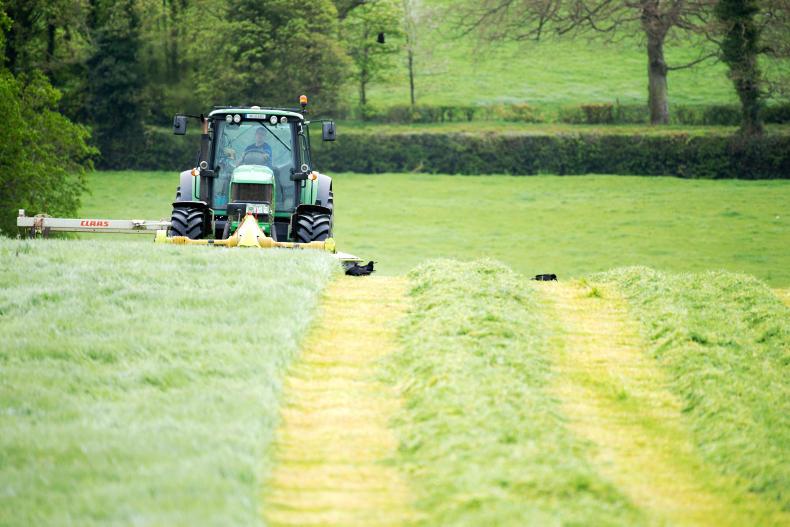With dry and sunny weather in the forecast, this week will see the start of the main first-cut silage harvest across the country. While many took the opportunity to cut some silage over the last few weeks, the heavy first-cut crops will be coming in this week.
The cold and dry April slowed grass growth, so many silage fields were closed later or didn’t grow as well as other years. Depending on how much nitrogen was spread, some of this nitrogen could still be in the grass and it might inhibit fermentation.
Normally, nitrogen is used up at a rate of two units per day in good growing conditions, but with slower growth than normal in April and early May, it’s hard to know how much nitrogen was used up. If in doubt, get the grass tested before cutting. A good wilt will reduce the nitrogen content anyway.
Additives
There are always question marks around the use of silage additives. Decisions should be based on the sugar content of the grass and the weather conditions at time of harvesting. Target sugar content is greater than 3%. If sugar content is between 2% and 3% – and the weather is good so a good wilt can be achieved – then there is no need for additive, even if nitrate levels are high.
However, if the weather is poorer and silage cannot be wilted, then an additive should be considered. If sugar content is less than 2%, then an additive should be used.
Not all additives are the same. The best additives for low-sugar grasses in wet weather is acid and molasses. Inoculants increase favourable lactic acid bacteria, but these are not limiting in most circumstances and they require high sugar content and favourable weather to work effectively.
Plan
It’s important to plan winter feed requirements. An acre of heavy first-cut silage (10t freshweight) will provide enough silage for about two cows over the winter. If thinking ahead to how much ground you need to close for second cut, an acre of heavy second-cut (6t freshweight) will provide enough silage for about 1.2 cows over the winter.
It goes without saying, but keep safety in mind when doing silage as the risks quadruple.
Read more
How to aim for milking-quality silage
Balancing rain, grass and supplementation
With dry and sunny weather in the forecast, this week will see the start of the main first-cut silage harvest across the country. While many took the opportunity to cut some silage over the last few weeks, the heavy first-cut crops will be coming in this week.
The cold and dry April slowed grass growth, so many silage fields were closed later or didn’t grow as well as other years. Depending on how much nitrogen was spread, some of this nitrogen could still be in the grass and it might inhibit fermentation.
Normally, nitrogen is used up at a rate of two units per day in good growing conditions, but with slower growth than normal in April and early May, it’s hard to know how much nitrogen was used up. If in doubt, get the grass tested before cutting. A good wilt will reduce the nitrogen content anyway.
Additives
There are always question marks around the use of silage additives. Decisions should be based on the sugar content of the grass and the weather conditions at time of harvesting. Target sugar content is greater than 3%. If sugar content is between 2% and 3% – and the weather is good so a good wilt can be achieved – then there is no need for additive, even if nitrate levels are high.
However, if the weather is poorer and silage cannot be wilted, then an additive should be considered. If sugar content is less than 2%, then an additive should be used.
Not all additives are the same. The best additives for low-sugar grasses in wet weather is acid and molasses. Inoculants increase favourable lactic acid bacteria, but these are not limiting in most circumstances and they require high sugar content and favourable weather to work effectively.
Plan
It’s important to plan winter feed requirements. An acre of heavy first-cut silage (10t freshweight) will provide enough silage for about two cows over the winter. If thinking ahead to how much ground you need to close for second cut, an acre of heavy second-cut (6t freshweight) will provide enough silage for about 1.2 cows over the winter.
It goes without saying, but keep safety in mind when doing silage as the risks quadruple.
Read more
How to aim for milking-quality silage
Balancing rain, grass and supplementation






 This is a subscriber-only article
This is a subscriber-only article










SHARING OPTIONS: